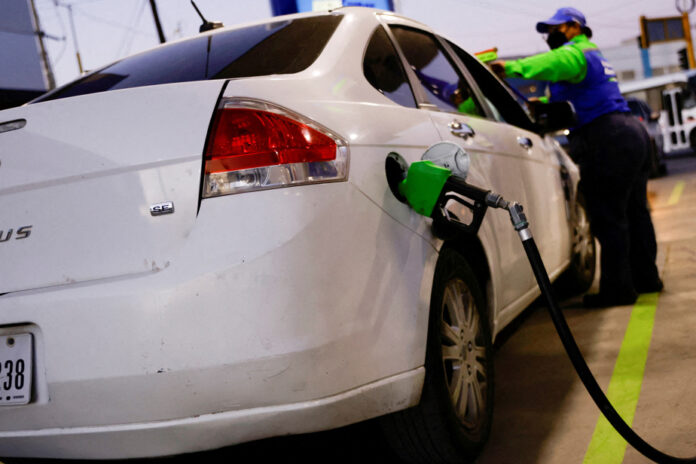(Paris) No respite in demand for black gold: the Organization of the Petroleum Exporting Countries (OPEC) expects a continued rise in global oil demand between now and 2045, according to new backward projections efforts required to limit global warming.
In its 2023 Global Oil Demand Outlook report released Monday, OPEC expects to see oil demand reach 116 million barrels per day (mb/d) by 2045, under its baseline scenario, or 16.5% more than in 2022. This is approximately 6 mb/d more than in its previous estimate communicated in 2022 (109.8 mb/d).
The secretary general of the cartel, Haitham Al Ghais, immediately warned that this demand had, in his opinion, “the potential to be even higher”.
“The world will continue to need to use all energies, including oil and gas, for many years and decades to come,” the Kuwaiti said while presenting the report to the organization’s members.
According to OPEC (13 countries, including Saudi Arabia, Gulf countries, Venezuela, etc.), this global demand for oil will be driven by non-OECD countries with India as the main driver, while it will decline from 2025 in the OECD area (mainly rich countries).
For OPEC, this demand can only be met at the cost of oil investments by 2045 estimated at $14,000 billion – around $610 billion on average per year.
“It is vital that these are achieved, it is beneficial for both producers and consumers,” said Haitham Al Ghais in this 298-page report.
It comes less than eight weeks before the start of the UN climate conference, COP28, in Dubai, where dozens of countries will try to impose a goal of phasing out fossil fuels (oil, gas, coal).
“Calls to stop investment in new projects are misguided and could lead to energy and economic chaos,” warned Haitham Al Ghais, in a direct criticism of the scenario envisaged by the International Energy Agency (IEA). to enable the world to achieve carbon neutrality by 2050.
“There is no single path to achieving carbon neutrality,” he also argued to OPEC members, assuring that oil will still have a “predominant share”.
In 2021, the IEA, an OECD agency, surprised the world, and angered oil-producing countries, by calling for all new hydrocarbon exploration projects to be abandoned. “No new long-term upstream oil and gas projects are necessary,” said the IEA recently, whose carbon neutrality scenario involves a collapse in oil demand, to 24 mb/d in 2050, thanks to the rise of clean energy.
Regardless, the IEA predicts that oil demand will begin to decline in the current decade…
Conversely, OPEC’s reference (or central) scenario defends “a realistic approach to energy demand”, maintaining that there is “no single solution to meet global growth in energy needs”. in energy”.
A speech that echoes that of the United Arab Emirates, members of OPEC and organizers of COP28. The president of this 28th climate conference, Sultan Al Jaber, recalls that we cannot unplug the current energy system, and that we must start by tripling the capacity of renewable energies.
On this subject, OPEC assures that the “ambitious objectives” of developed economies on low-carbon energies “are increasingly in contradiction with the realities on the ground”, with investments “considerably lagging behind” and returns in backward on climatic trajectories.
OPEC nevertheless studied two other scenarios, including one with more renewables, resulting in a drop in oil demand of 18 mb/d compared to its 2045 reference (i.e. 116 million). While another scenario, based on higher economic growth and less coordination of climate policies, results in 6.3 million mb/d more in 2045 than the 116 million envisaged in its reference scenario.
OPEC is finally supporting carbon capture technologies, which “must be part of the solution.” Solutions advocated by oil companies, but which are still far from maturity.















